Maghernacloy
Houses within 10km of this house
Displaying 22 houses.
Houses within 10km of Maghernacloy
Displaying 22 houses.
| House name | Description | |
|---|---|---|
| Kiltybegs | Large complex of buildings marked on the 1st edition 6 inch Ordnance Survey map (1836). This was part of the estate of Major John Leslie who held it in fee. The buildings which included a house were valued at £15. Later the home of Charles J. Leslie (see building return 1901 census) and of the land steward, George McGregor, in 1911. This house is no longer extant. | |
| Donaghmoyne | Donaghmoyne House is named on the 1st edition 6 inch Ordnance Survey map (1836) and the grounds include a walled garden and plantations. A mill and quarry were located nearby. Lewis records Donaghmoyne as the residence of J. Bashford. John Dixie, who had oil and flax mills near the house, was the occupier in the mid-19th century. He held the property, described as a steward’s house, from the Reverend Robin L. Tottenham, whose estate was at that time in the Court of Chancery. The buildings which included a gate lodge were valued at £17. Donaghmoyne was purchased by Richard Bolton from the Reverend Tottenham in the early 1860s. John Marshall Bolton and his wife were resident in the early 20th century. This house is still a residence. |
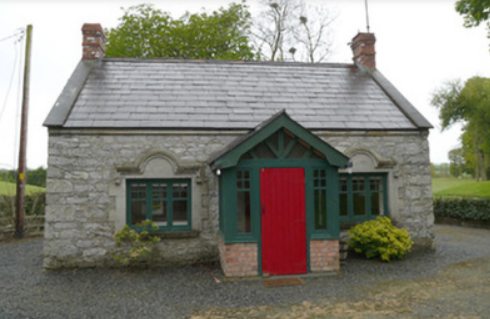
|
| Capragh | A house located close to Capragh Lough was in existence at the time of the first Ordnance Survey in the 1830s. By the mid-19th century it was occupied by Hubert Kiernan who held the townland in fee. The buildings were valued at £15. Occupied by the Mitchell sisters in 1901 and by Mary Mitchell in 1911. Part of the yard buildings still remain at this site. |
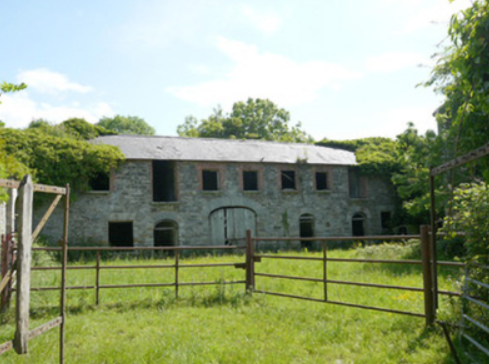
|
| Ballymackney | Ballymackney House is named on the 1st edition 6 inch Ordnance Survey Map (1836) which shows a large walled garden close by. Ballymackney was located on the estate of the Marquess of Bath. Lewis records the proprietor as W. Daniel. It became the home of George Henry Gartlan and his wife Mary McMullan of Cabra, county Down, who married in 1846. Seven years later they left Ballymackney to live at Cabra. At the time of Griffith’s Valuation circa 1860 the house was occupied by David Grimstone who held it from Thomas Jackson. The buildings were valued at £20. This house is still the centre of a farming enterprise just outside the village of Ballymackney. |

|
| Monalty House | This house, located on the Marquess of Bath’s estate, dates from the 18th century and was the residence of the agent, Norman Steele, in 1798. In the 19th century Monalty House was the home of the Gartlan family. It was purchased by James Gartlan, a wealthy distiller in the town of Carrickmacross. Lewis records his son Thomas McEvoy Gartlan as the proprietor in the 1830s. The house is named on the 1st edition 6 inch Ordnance Survey Map (1836). Thomas M. Gartlan was recorded as the occupier in Griffith’s Valuation when the buildings were valued at £26. Members of the Gartlan family were still resident in the early 20th century. https://pdeanisland.wordpress.com/places/carrickmacross/monalty-house/ | |
| Annahean House | A house built after the first Ordnance Survey and before Griffith’s Valuation, when it was valued at £20. Catherine Kelly was resident and she held the property from the Reverend James Shirley. The house was built close to a previous residence with a tannery nearby. This was the home of the Kelly sisters in the early years of the 20th century. |
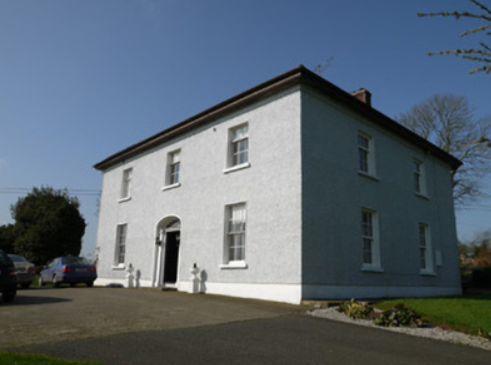
|
| Derrylavan | A small building was located at this site on the 1st edition 6 inch Ordnance Survey Map (1836). The buildings were valued at £16 circa 1860 when William Lane was resident. He held 218 acres, about half the townland from Evelyn P. Shirley. Lough Fea was nearby. There was a milling complex a short distance away in the same townland. This house appears to be still extant. | |
| Belle Vue | This house is named on the 25 inch Ordnance Survey map (survey of 1908). It was built on the Shirley estate in the mid-19th century when it was occupied by John Thomas Holland and valued at £16. John Holland was appointed a magistrate by Lord Rossmore in 1854 (Dublin Evening Mail, 11 Oct 1854). Home of the Withrington in the early 20th century, now demolished. | |
| Shirley House | Shirley House located in the town of Carrickmacross is named on the 1st edition 6 inch Ordnance Survey Map (1836). It was the home of the agent, George Morant junior, in the 1840s and 1850s and was occupied by Shirley family members and others at various times, for example Alexander Mitchell in 1837 (Lewis, I, xlvii), Horatio Shirley of Shirley House was High Sheriff in 1872, John Thomas Holland of Shirley House died on 14 October 1881 aged 74 (The Belfast Morning News, 18 Oct 1881), Captain Evelyn Shirley was resident in 1914 and Felix Patrick Smith in 1925 (Thom’s Directory 1926). This house is now demolished. | |
| Lisanisk | Lisanisk is situated on the outskirts of Carrickmacross and close to Lisanisk Lake. In the 1780s it was inhabited by Walter Dawson whose daughter Sarah married Archibald Hamilton Rowan. The Post Chaise Companion in the early 19th century records a Mr Gibson at Lisanisk while Lewis in the 1830s names Adam Gibson. Edward Gibson was the occupant at the time of Griffith’s Valuation when the buildings were valued at £25 and held from the Marquess of Bath. The Patrician Brothers were occupying Lisanisk by 1911. This house was offering accommodation on a B&B basis in the 2010s. | |
| Tullyallen House | Situated very close to Tullyallen Lough on the Brownlow estate, the buildings at Tullyallen House were valued at £17 in the mid-19th century. The occupant was Anne Kelly. James Murphy, farmer and Justice of the Peace, was resident in the early 20th century. | |
| Drumboory | Located close to a small lough a house valued at £10 was occupied by John Kenny and held from William Brownlow in the mid-19th century. A Kenny family was still located in this townland in the early 20th century. | |
| Loughderry | Located close to the shore of Lough Derry this house was the residence of S. Pendleton in the 1830s. The house may have been extended by the time of Griffith’s Valuation circa 1860 when it was valued at £17. It was occupied by George Renwick [Rennick] who held the property from William Brownlow. Family sources suggest George Rennick was formerly the proprietor of the Shirley Arms Hotel in Carrickmacross and the King's Arms in Clones, before retiring to Derry sometime between 1846-1860. Loughderry House has been the home of the Rennick family for many generations. | |
| Drummond Cottage | Named on the 1st edition 6 inch Ordnance Survey Map (1836) this house with a farm of 125 acres was the home of the Kelly family in the mid-19th century. Thomas Kelly was resident holding the property from Mary Anne Kelly. Most of the townland belonged to the Porter family. A Mary Anne Jones Kelly of Priorland, Dundalk, owned 200 acres in county Monaghan in 1876. This cottage and its outbuildings date from the early 19th century and still survive. |
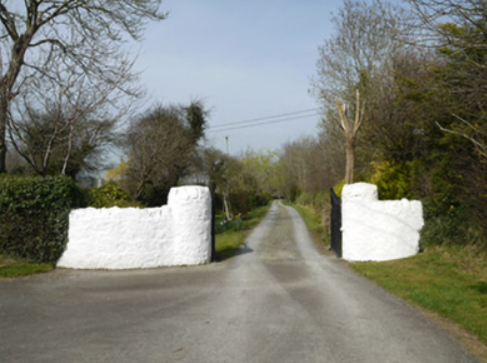
|
| Losset House | This house was built in the mid-19th century on the Shirley estate, close to Lough Fea Castle. It was valued at £8 and occupied by William Roarke. |

|
| Lough Fea House | Built in 1827 to the design of Thomas Rickman, this large house was the first residence of the Shirleys in county Monaghan, although they had owned a large estate since Elizabethan times. Lewis described this new edifice as ‘a spacious and handsome structure in the Elizabethan style of architecture’. A church and great hall were later additions. The buildings were valued at £180 circa 1860. The Shirley family continue to live at Lough Fea. | |
| Doohatty | A building named Cottage is marked on the first edition Ordnance Survey map (1836). It was located in the same townland as Lough Fea House, the home of the Shirley family. In the mid-19th century John Cooper was the occupant and the building was valued at £12. It appears to still be extant. | |
| Cabra Cottage | This house was the home of the Pratt family until Cormey Castle was purchased in 1813 and was renamed Cabra Castle. Cabra Cottage is shown on the first edition six inch Ordnance Survey map (publ. 1837) as a substantial building close to a mill race, quarry and the ruins of the first Cabra Castle. Bence Jones describes this building as an early 18th century villa possibly designed by Sir Edward Lovett Pearce. He writes that it was used as a ballroom following the Pratts move to live in their new home in Cormey. In the mid-19th century it was valued at £20 for rates and Colonel Joseph Pratt was the owner and occupier. The 25 inch map shows the building much reduced in size. Bence Jones writes that it was destroyed by fire in the 1950s. | |
| Cabra Castle | The second Cabra Castle, probably incorporating the old Cormey Castle, was complete by the late 1830s. It is located on the county border between Cavan and Meath. A castellated building of Gothic appearance Cabra Castle had a rateable valuation of £70 in the mid-19th century when occupied and owned by Colonel Pratt. It continued to be the main residence of the Pratts until the mid -0th century when it was inherited by a relative, Mervyn Sheppard, who sold it in the mid-1960s. It now functions as a hotel. https://www.cabracastle.com/ |
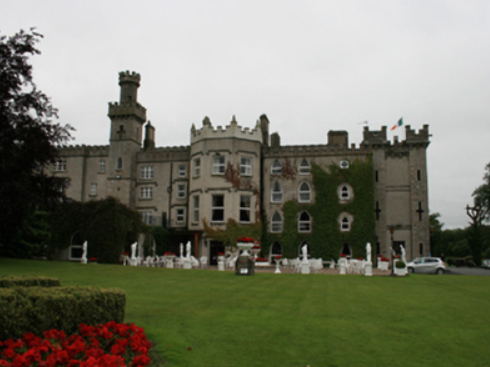
|
| Corrinshigo House | Corrinshigo House was located to the west of the other two Pratt homes, Cabra Cottage and Castle. It is named on the first edition six inch Ordnance Survey map (publ. 1837). Lewis records it as the residence of J. Pratt and Griffith’s Valuation records Francis Pratt as the occupier holding the property from Frances E. Pratt. It had a rateable valuation of £15. Occupied by George Pratt and his mother in 1901. Now a green field site. | |
| Mullantra | Mullantra was located on the border between counties Cavan and Monaghan and north of the other Pratt homes in the locality. In 1814 it was occupied by James Butler Pratt. Lieutenant Edward Pratt of Mullantra, Kingscourt, petitioned the Lord Lieutenant in 1822 for an appointment to a post in the police establishment (National Archives CSO/RP/1822/1006). By the time of Griffith’s Valuation this building, the property of Colonel Pratt, had a rateable valuation of £2 and was vacant. A new building appears on a nearby site on the 25 inch map and is still extant in the middle of a forestry area. | |
| Inver Lodge | Henry Edward Porter held a house in fee, valued at £14, in Magheross on the outskirts of Carrickmacross, circa 1860. This appears to be Inver Lodge which is named on the first edition Ordnance Survey map (publ. 1836). This house is still extant. |

